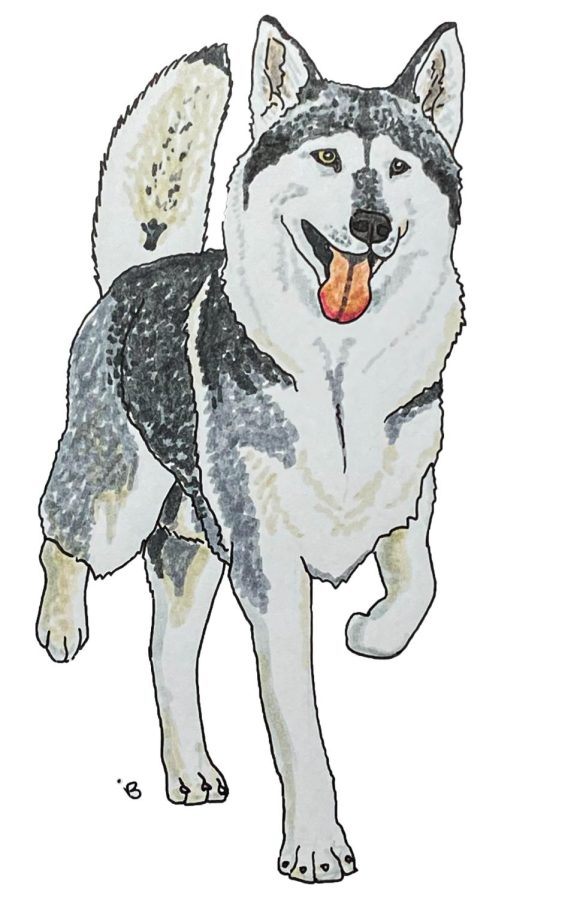Dog behaviors decoded
Carrying, fetching, circling behaviors in your furry friends can all be traced back to wolf ancestors
Some breeds, like the Alaskan Malamute and Czechoslovakian Wolfdog, look remarkably like wolves. Despite thousands of years of domestication, dogs retain many instincts that wolves depend on in the wild.
April 21, 2022
Dogs trot through campus, frolic in the park and relax on our couches. People often characterize their behaviors as cute, deciding their actions are a means of asking for food or attention. However, our interpretations of these behaviors may be misled. To understand dog behavior, we must go back to their roots.
Dogs are domesticated from wolves, according to Nature. That is all there is to it! Selective breeding produced the myriad of pups we share our homes and lives with today. Some breeds, like the Alaskan Malamute and Czechoslovakian Wolfdog, look remarkably like wolves. Despite thousands of years of domestication, dogs retain many instincts that wolves depend on in the wild.
Gray wolves are powerful predators, but bears and smaller scavengers often steal their meals. To protect their leftovers, wolves bury the remains of kills, according to research published in Canadian Field-Naturalist. Burying food also helps keep carcasses fresher, and sometimes wolves will cache food in anticipation of prey scarcity. Your dog likely buries items to satisfy this protective instinct.
This protective behavior also explains food-carrying in domestic dogs. If you give a dog a cookie, it will often carry it to another location before settling down to nibble. Some dogs pick up their kibble bowl and carry it to a different location in the house to eat dinner.
Another food-related behavior is fetch. Why do dogs enjoy retrieving items? When wolves hunt, they often bring prey back to their den to share with pups and other pack members, according to the International Wolf Center.
Research conducted by Stockholm University also found that some gray wolf pups retrieve balls thrown by humans, according to Science. Bounding over a trimmed, green lawn to bring a toy back to your outstretched hand looks nothing like providing for a pack in the wild, but it still satisfies an instinct embedded deep in a dog’s psyche that was bred for by humans for years.
Perhaps the most unusual behavior is circling. Most dogs turn in a circle, or several, before they lay down. Sometimes they also scratch or sniff at the ground. Yet again, we can look to wolves for the answer, according to dog behavior specialists from VCA Animal Hospitals. Wolves turn in circles before bedding down for several reasons.
First, the turning stamps down grass to create a soft nest. The kicking removes pests, bugs, rocks or unwanted sticks. Turning may also help check their surroundings and ensure their desired sleeping area is safe. Finally, turning allows wolves to determine the direction of the wind.
Because sleeping downwind allows wolves to detect the scent of threats prior to their arrival, wolves sleep with their noses to the wind. Although domestic dogs may not be turning for all the reasons wolves do, they are still performing a behavior ingrained in their genetics.
As you spend time with your four-legged family member, take a closer look at behaviors you may not have noticed before. Many aspects of your dog, from its vocalizations to its body language, are based on the survival of ancient wolves and thousands of years of selective breeding. Noticing how much your dog reflects its wolf ancestors is a humbling reminder of the wolf that still lives in every canine companion.










